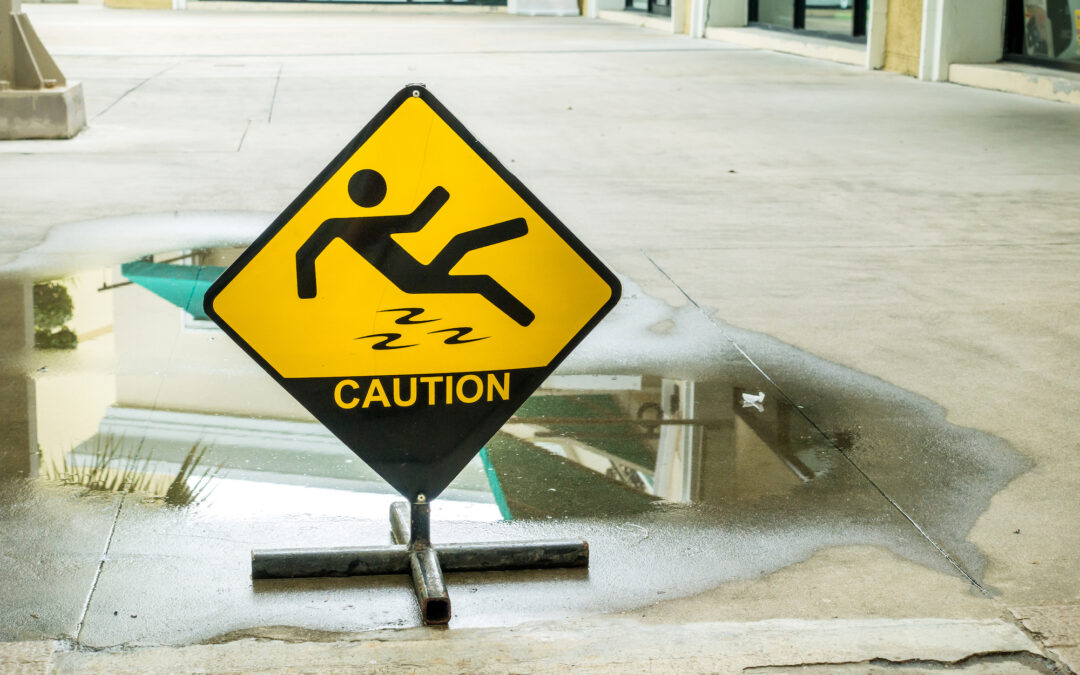Workplace accidents happen every day; slipping on a wet floor, tripping over a level change in the floor surface, falling off a step ladder, or being struck by an object because you unexpectedly put yourself in the line of fire. Many scenarios like this result in injuries where the accidents are preventable if only you were to leave yourself an out.
Discussion Points:
• What does it mean to leave yourself and out?
• What are some best practices for minimizing hazards?
• Name two steps in preventing accidents;
• What is the SLAM principle?
Discussion:
What does it mean to leave yourself an out? Leaving yourself an out means the ability to escape danger. You should always be prepared to react to any situation and consider what your options are depending on the conditions. Never put yourself in a position where there is no escape. Always leave yourself an out. Employers have the responsibility to provide a safe work environment for their employees. They must establish and implement processes and procedures to comply with OSHA standards and keep workers safe from injury.
Workers have the responsibility to keep themselves and co- workers safe. Workers must recognize and understand how to avoid placing themselves in the line of fire. This can be done by identifying hazards before starting any job task and removing the potential hazard or risk where possible. Best practices for minimizing hazards include awareness of the surroundings and hazards in the work area, understanding how equipment and machinery work, taking time to consider the result of your actions, and never putting yourself or co-workers at risk. Ensure that workers are trained and procedures are followed for all tasks, always use the right tool for the job and wear the appropriate personal protective equipment (PPE).
Workers are injured when they find themselves in a dangerous situation they cannot escape. Between 80 to 90 percent of all workplace accidents are caused by unsafe behaviors such as rushing to complete a task or becoming complacent. Self-Awareness and identifying hazards in the work area are steps in preventing accidents and putting yourself in a position to escape any dangerous situation and prevent injuries. A good principle to follow is SLAM; Stop-Look-Assess- Manage. Identify and remove the risk, stay focused on the task, never walk under a suspended load, and don’t take shortcuts. Use best practices to minimize the hazard; organize the work area, keep the pathways clear, and provide easy access to equipment and machinery. Understand the machines and operations in your work area and think about what needs to be done to complete the job task. Never place yourself or your co-workers in harm’s way.
As always, be safe out there!


Recent Comments